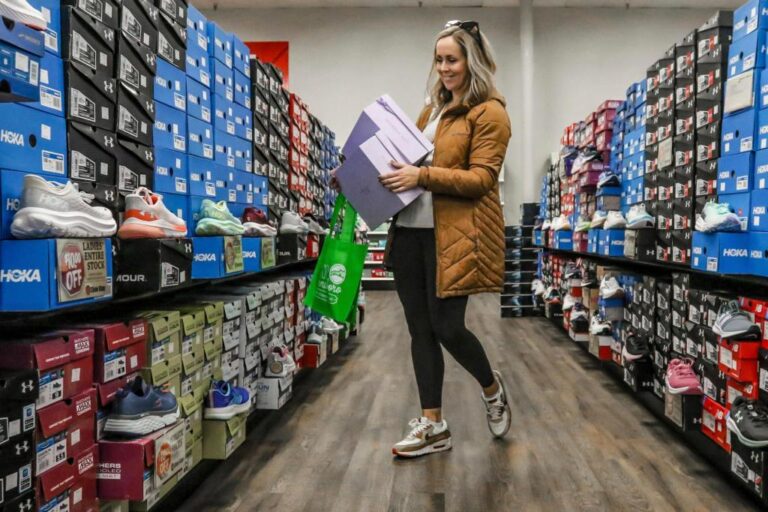Staying connected is essential for work, travel, and daily tasks. Many people look for ways to find free WiFi for free in public places.
Free WiFi helps with navigation, communication, and saving mobile data. Knowing where and how to access it safely makes a big difference.
What Are WiFi Hotspots?
A WiFi hotspot is a location where people can connect to the internet wirelessly. These hotspots are found in public places, businesses, and even personal devices.
How Do WiFi Hotspots Work?
Hotspots use a wireless router to create an internet connection that devices can access. The router connects to a network provider through a wired or mobile connection.
When a device joins, data is sent and received through the router. Some hotspots are free, while others require a login or payment.
Businesses may offer access in exchange for purchases. Many modern smartphones can also act as personal hotspots.
Public Vs. Private Hotspots
A public hotspot is open for anyone to use, often found in cafes, airports, and libraries. These networks may not be secure, making them risky for sensitive activities.
A private hotspot is protected and usually requires a password. Home networks, workplaces, and personal phone hotspots are common examples.
Private networks provide better security and control over who connects. Always check if a hotspot is safe before using it.
Mobile Apps for Finding Free WiFi
Many apps help users locate free internet in different locations. These apps use crowdsourced data and official sources to show nearby networks.
WiFi Map・eSIM, Internet Finder
This app helps users find hotspots worldwide with real-time updates. It provides a map-based search for open networks in cities, businesses, and public areas.
Overview of the App and Its Features
WiFi Map offers a detailed map of available hotspots worldwide. Users can see password-protected and open networks.
The app includes a built-in VPN for safer browsing. Offline maps let users access network data without the Internet.
It also supports eSIM activation for mobile data in different regions. The community shares and updates network details regularly.
How to Use the App to Locate Free WiFi Spots Worldwide?
After downloading, open the app and enable location access. Search for networks using the interactive map or list view.
Click on a hotspot to see details, including passwords if shared. Use filters to find specific network types, such as cafes or hotels.
The offline mode helps in areas with no mobile data. A VPN option is available for extra security.
Availability on Google Play and App Store
The app is free to download on Google Play and the App Store. Some features require a premium upgrade for full access.
Users can install it on both Android and iOS devices. Official links: Google Play | App Store.
Other Apps That Can Be Used to Find Free WiFi
Several alternatives also help locate public networks. These apps provide similar map-based searches and user-generated updates.
- Instabridge – A database of public networks with password sharing. Works offline and includes a secure VPN feature.
- Opensignal – Focuses on both WiFi and mobile coverage. Offers speed tests and network availability maps.
- WiFi Analyzer – Helps users check signal strength and security. Ideal for finding the best connection spots indoors.
- Wiman – A global hotspot database with offline access. Allows users to contribute new network details.
Tips for Accessing Free WiFi Safely
Public networks are not always secure, making users vulnerable to cyber threats. Taking precautions helps protect personal data from hackers.
Risks of Using Public WiFi
Hackers can intercept data on open networks, exposing personal information. Some networks may be fake hotspots created to steal login details.
Unsecured connections can lead to malware infections on devices. Banking and sensitive transactions should be avoided on public connections.
Auto-connect features may connect users to untrusted networks. Cybercriminals often use packet sniffing to track online activity.
How to Stay Safe on Public Networks?
Using security measures helps reduce risks when connecting to open networks. Follow these tips to protect your data while using free internet.
- Use a VPN – Encrypts your connection and hides online activity.
- Verify the Network Name – Confirm with staff that the hotspot is legit.
- Turn Off Auto-Connect – Prevents devices from joining unsafe networks automatically.
- Enable Two-Factor Authentication – Adds extra security to online accounts.
- Avoid Logging into Sensitive Accounts – Do not access banking or private info on public connections.
- Keep Software Updated – Ensures the latest security patches are installed on your device.
Local Businesses Offering Free WiFi
Many businesses provide customers with free internet access. These locations are common spots for staying connected while on the go.
Common Places That Offer Free Internet
Certain businesses regularly offer free connections to attract customers. These places often have secured networks with login requirements.
- Cafes and Coffee Shops – Popular for working or studying, often require a small purchase.
- Libraries – Offer free access for reading, studying, and research.
- Hotels and Hostels – These are available in lobbies and rooms, sometimes with a password.
- Airports and Train Stations – Provide connections, though some require registration.
- Shopping Malls – Many have free access to food courts or lounges.
- Fast Food Restaurants – Chains like McDonald’s and Starbucks offer limited-time access.
Etiquette and Rules When Using Business-Provided Internet
While many places offer free access, following proper etiquette is essential. Businesses may have rules to ensure fair use of their networks.
- Make a Small Purchase – Many places expect customers to buy something before using the network.
- Limit Streaming and Downloads – Avoid using too much bandwidth for videos or large files.
- Respect Time Limits – Some locations restrict use to one or two hours per session.
- Use Headphones – Keep noise levels low when watching videos or taking calls.
- Follow Business Policies – Check posted rules or ask staff for connection guidelines.
Public Initiatives and Municipal WiFi
Some cities provide free internet access in public areas for residents and visitors. These services help people stay connected without using mobile data.
Government-Provided Internet in Public Spaces
Many local governments offer public hotspots in busy areas. Parks, bus stations, and libraries often have official networks for public use.
Some cities install hotspots on streetlights to expand coverage. Public transit systems may provide internet on buses and trains.
These networks help students, workers, and tourists stay online for free. Connection speeds and time limits vary based on location and demand.
Where to Find and Access Public Networks
Many cities have designated areas where people can use free public internet. Knowing where to find these connections makes it easier to stay online when needed.
- Parks and Public Squares – Many cities provide hotspots in open spaces for visitors.
- Libraries and Community Centers – Offer free access for reading, research, and study.
- Transit Hubs – Airports, train stations, and bus terminals often have public connections.
- Government Buildings – Some city halls and municipal offices provide guest networks.
- Downtown Areas – Many urban centers have WiFi zones in high-traffic locations.
Wrapping Up: The Best Ways to Find Free WiFi
Finding free WiFi helps people stay online without relying on expensive mobile data. Apps, public networks, and business hotspots provide reliable access in many places.
Safety measures like VPNs and secure connections keep personal data protected. Using these tips ensures a better and safer internet experience anywhere.











